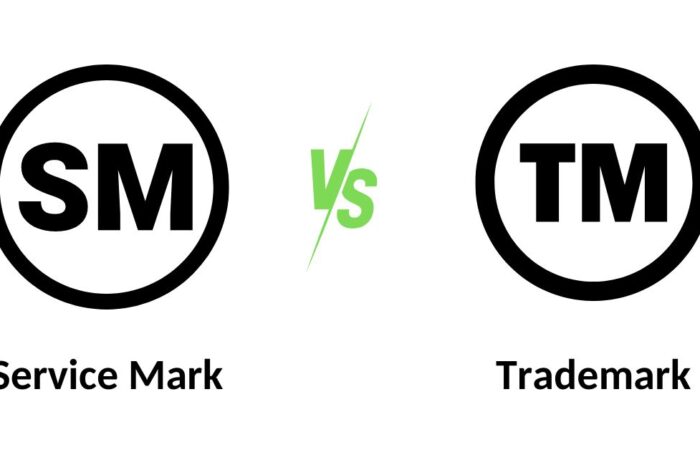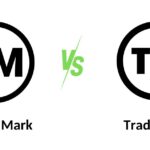When deciding how to protect your invention, understanding the differences between a provisional vs non provisional patent is crucial. A provisional patent is a preliminary application that establishes an early filing date and allows you to label your invention as “patent pending.” This type of patent provides a temporary safeguard, giving you up to 12 months to refine your invention or prepare a more detailed application.
Conversely, a non-provisional patent is a formal application that undergoes thorough examination by a patent examiner. It necessitates a comprehensive description of the invention along with specific claims that outline the extent of protection If granted, it offers exclusive rights for up to 20 years, providing long-term protection for your intellectual property.
Understanding the distinctions between provisional vs non provisional patents helps you choose the right strategy for your needs. A provisional patent can be an effective way to secure your idea while you develop it further, whereas a non-provisional patent offers comprehensive, enduring protection for your invention.
Provisional vs Non-Provisional Patent
| Feature | Provisional Patent | Non-Provisional Patent |
| Purpose | Provides a temporary safeguard and establishes an early filing date. | Grants full patent rights after thorough examination. |
| Duration | Valid for 12 months. | Provides protection for up to 20 years from the filing date. |
| Cost | Generally lower and more affordable. | Typically higher due to detailed requirements and examination. |
| Application Requirement | Requires a basic description of the invention. | Requires a detailed and comprehensive description with claims. |
| Examination | None of them undergo examinations. | Subject to a thorough examination process. |
| Protection | Does not grant any patent rights. | Provides exclusive rights to manufacture, utilize, and commercialize the invention. |
| Filing | Used to secure an early filing date and indicate “patent pending” status. | Used to obtain enduring patent protection and exclusive commercial rights. |
| Conversion | Must be followed by a non-provisional patent application to obtain full patent rights. | Final application; no further conversion needed. |

What is a Provisional patent?
A provisional patent is a temporary application filed with the United States Patent and Trademark Office (USPTO) that establishes an early filing date for your invention. It offers a 12-month window to refine your invention and develop a more comprehensive non-provisional patent application. Unlike a non-provisional patent, a provisional patent does not undergo an examination process and does not confer any patent rights by itself. It enables you to label your invention as “patent pending” and provides an affordable means of obtaining preliminary protection. Understanding the differences between provisional vs non provisional patents helps you choose the best strategy for securing and protecting your intellectual property.
What is a Non Provisional Patent?
A non provisional patent is a formal application filed with the United States Patent and Trademark Office (USPTO) that, if granted, provides full patent protection for your invention. It necessitates a comprehensive description of your invention, along with precise claims that outline the extent of protection. Unlike a provisional patent, a non provisional patent undergoes a thorough examination process to determine its patentability. If approved, it grants exclusive rights to make, use, and sell the invention for up to 20 years from the filing date. Understanding the role of a non provisional patent is essential for securing long-term protection and commercial rights for your innovative ideas.
Also Read: How Long Does It Take To Get A Patent?
Provisional Patent Application – Pros & Cons

A provisional patent application is a cost-effective way to secure an early filing date, allowing you to label your invention as “patent pending” and providing a 12-month period to refine and advance your idea. However, it does not grant patent rights, expires after a year if not followed by a non provisional application, and lacks examination.
| Pros | Cons |
| Cost-Efficient: Typically more affordable compared to a non-provisional patent. | No Patent Rights: Does not grant any patent rights or protection on its own. |
| Early Filing Date: Secures an early filing date, establishing priority. | Short Duration: Expires after 12 months if a non provisional application is not filed. |
| “Patent Pending” Status: Allows you to market your invention as “patent pending,” which can deter potential infringers. | No Examination: Does not undergo examination, so it does not guarantee patentability. |
| Flexibility: Allows up to 12 months to develop your invention further and prepare a comprehensive non-provisional application. | Limited Detail: Requires only a basic description, which might not be sufficient for full protection. |
Non-Provisional Patent Application – Pros & Cons
A non provisional patent application offers comprehensive protection and exclusive rights if granted, including a detailed examination of your invention. However, it is more expensive, involves a lengthy examination process, and requires a thorough and detailed description.
| Pros | Cons |
| Exclusive Rights: Grants full patent protection if approved. | Cost: Typically higher due to detailed requirements and examination. |
| Detailed Examination: Undergoes a thorough examination process. | Lengthy Process: Examination and approval can take several months or years. |
| Extended Coverage: Provides protection for a maximum of 20 years. | Complexity: Requires a detailed and comprehensive application. |
| Legal Security: Offers strong legal protection and commercial advantage. | Preparation Time: Requires significant time and effort to prepare. |
Also Read: Patent Publication vs Granted
How to Prepare for Each Type of Patent?

Preparing for a Provisional Patent Application:
- Document Your Invention: Write a detailed description of your invention, including its purpose, components, and how it works.
- Drawings and Diagrams: Create clear drawings or diagrams to illustrate your invention.
- Research: Conduct a preliminary patent search to ensure your invention is novel.
- Draft Application: Prepare a basic provisional patent application, focusing on a clear and thorough description.
- File with USPTO: Submit your provisional patent application online with the United States Patent and Trademark Office (USPTO).
Preparing for a Non Provisional Patent Application:
- Detailed Description: Develop a comprehensive description of your invention, including its features and advantages.
- Patent Claims: Formulate precise claims that outline the extent of protection you desire.
- Professional Drawings: Obtain detailed and professionally prepared drawings or diagrams.
- Conduct a Thorough Patent Search: Perform an in-depth patent search to ensure your invention is unique and does not infringe on existing patents.
- Prepare Application: Assemble a complete non provisional patent application with all required documentation.
- Submit and Monitor: File the application with the USPTO and monitor its progress through the examination process.
| Preparation Steps | Provisional Patent | Non Provisional Patent |
| Document Your Invention | Write a basic description of your invention. | Develop a comprehensive and detailed description. |
| Drawings and Diagrams | Create simple drawings or diagrams. | Obtain detailed and professionally prepared drawings. |
| Research | Conduct a preliminary patent search. | Perform an in-depth patent search to ensure novelty. |
| Draft Application | Prepare a basic provisional patent application. | Draft specific patent claims defining the scope of protection. |
| File with USPTO | Submit online to the USPTO. | Submit a full application along with all necessary documentation. |
| Monitoring | Not applicable. | Monitor the application process through examination. |
Conclusion
Understanding the differences between provisional vs non provisional patents is essential for effectively protecting your invention. A provisional patent offers a cost-effective way to secure an early filing date and a 12-month period to refine your idea, but it does not grant patent rights or undergo examination. In contrast, a non provisional patent provides comprehensive protection and exclusive rights upon approval, though it involves a more detailed application process and higher costs. By evaluating your needs and stage of development, you can choose the appropriate patent strategy to safeguard your intellectual property and enhance your innovation’s market potential.
Frequently Asked Questions
1. Is a provisional patent a good idea?
Yes, a provisional patent is a good idea for securing an early filing date and “patent pending” status while you refine your invention. It’s cost-effective and gives you up to 12 months to file a non-provisional patent.
2. How long does a provisional patent last?
A provisional patent is valid for 12 months from the date it is filed. It expires if a non-provisional patent application is not filed within this period.
3. What is the provisional patent average cost?
The average cost of a provisional patent application typically ranges from $70 to $300, depending on whether you file it yourself or use a patent attorney.
4. How much is a non-provisional patent?
The cost of a non-provisional patent application generally ranges from $5,000 to $15,000, including filing fees, attorney fees, and other expenses.






